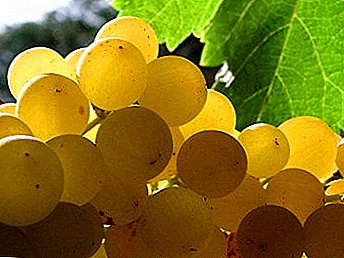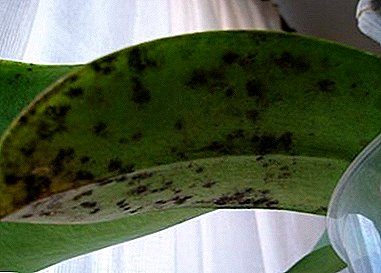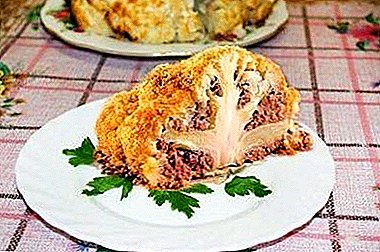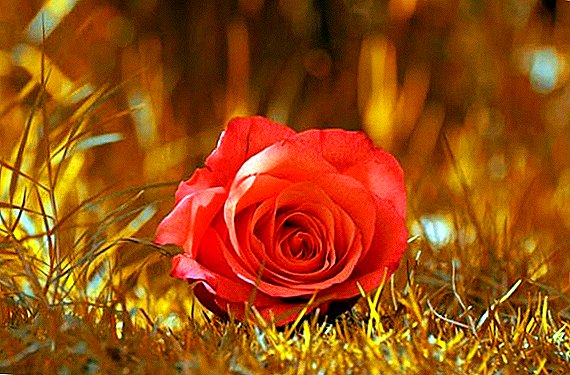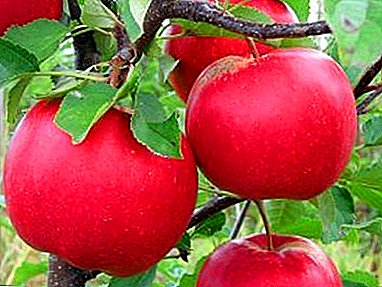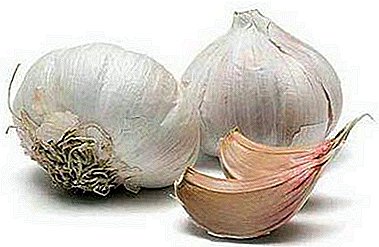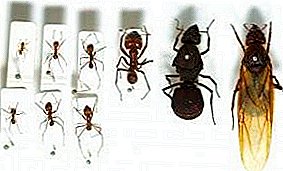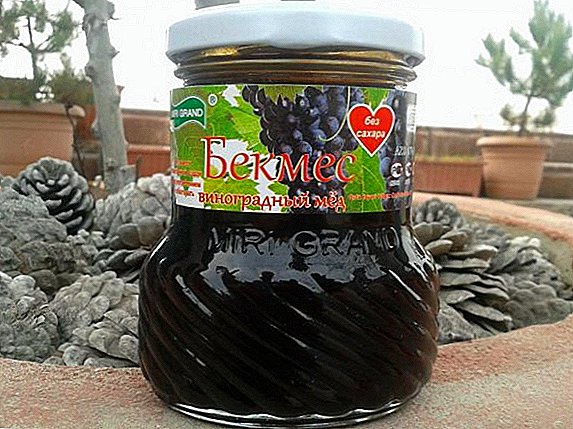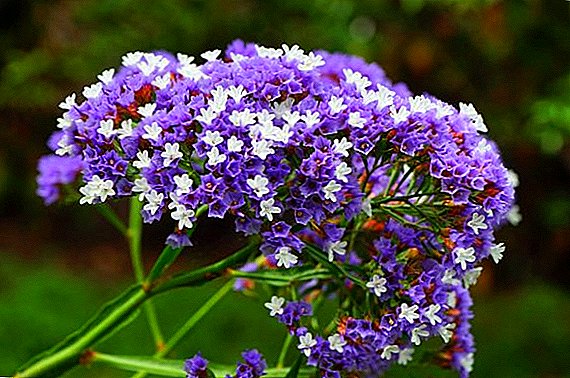 Statica (or as it is called immortelle, Kermek, limonium) - popular dried flowers, which has long been used in the landscape design of many European countries.
Statica (or as it is called immortelle, Kermek, limonium) - popular dried flowers, which has long been used in the landscape design of many European countries.
As for many CIS countries, the statice is used infrequently as a garden decoration, but some gardeners are still interested in the nuances of sowing Kermek.
 The plant is remarkably high peduncles, on which are lush and openwork candle-inflorescences of a wide variety of colors and shades. Therefore, it is possible to make whole flower compositions from the flowers of immortelle, especially if you learn to combine them with other cultures correctly.
The plant is remarkably high peduncles, on which are lush and openwork candle-inflorescences of a wide variety of colors and shades. Therefore, it is possible to make whole flower compositions from the flowers of immortelle, especially if you learn to combine them with other cultures correctly.
Growing statice through seedlings
There are several ways to propagate statics, but most often plants propagate by seed or acquire ready-made seedlings.
When is it best to sow on seedlings
Although statice is considered an unpretentious plant, however, when growing it from seeds, there are still certain rules. First of all, should correctly determine the timing of seeding. In this matter, it is necessary to proceed from a specific method of sprouting seedlings: in pots (special containers) or in a greenhouse.
In the first case, the optimum time for sowing seeds is considered to be mid-February, while when planting in a greenhouse it is necessary to wait until it warms up as much as possible, and this will happen not earlier than the end of March - mid-April.
 Considering that statice is a thermophilic plant, regardless of the method chosen, the temperature should be in the range of 15 ° С to 22 ° С. Just knowing exactly when it should be planted statics on seedlings, you can get a flowering and lush plant in time.
Considering that statice is a thermophilic plant, regardless of the method chosen, the temperature should be in the range of 15 ° С to 22 ° С. Just knowing exactly when it should be planted statics on seedlings, you can get a flowering and lush plant in time.
Choosing a soil for planting seedlings
Planting seeds of immortelle should be made in loose soil, the role of which is perfectly suited for the substrate based on peat or special land for seedlings. The main requirement: the soil should be light, loose and not strongly compacted after watering.
Important! To increase the looseness of the soil, one part of the sand is added to three parts of the substrate.The prepared soil is sieved, sprigs, lumps and other debris are removed from it, after which it is desirable to add a solution of manganese to the soil or to ignite it in the oven, which will kill all fungi and harmful microorganisms.
The resulting substrate is placed in pots with a drainage layer and a special drain hole. Before directly planting the seeds of the soil, the prepared soil is moistened, but not so much that the soil is not too wet.
Seed preparation before sowing
What Kermek is and how limonium looks like may be known to many gardeners, but not all of them have come across the seeds of a given plant. In fact, they are quite remarkable, since they have a relatively small size and an elongated shape, with cusps at the ends.
 All seeds are enclosed in fruits that do not need to be peeled or scarified, although, at first glance, the shell may seem too dense. Before sowing them, they are poured with warm water for several hours, although this is not necessary.
All seeds are enclosed in fruits that do not need to be peeled or scarified, although, at first glance, the shell may seem too dense. Before sowing them, they are poured with warm water for several hours, although this is not necessary.
In the modern market, seeds that are already peeled from the fruit are often found, but experienced flower growers who have long been engaged in the cultivation of these dried flowers, recommend sowing statics, putting in the ground whole ribbed fruit.
Did you know? The historic homeland of the immortelle are the saline Mediterranean territories, which is why agrotechnicians advise adding salt to the water for irrigation in the proportion of 1 tbsp. spoon of salt per 10 liters of liquid.
Static seed sowing
Statica tolerates transplants very poorly, so it is advisable not to sow all the seeds in one box. Ideally, there should be one seed per pot, because the root system of these plants is so voluminous that when sown by a group, even the seedlings are closely in a box.
The process of sowing itself will not take you much time. Spread the seeds of the plant on the prepared soil and lightly sprinkle it on top of the soil. Finished containers are better to carry in a greenhouse or greenhouse, and if this is not possible, then you can simply cover the boxes with glass or film.
 As you can see, planting statics on seedlings is easy, and the main thing is to provide it with suitable soil and a warm place for quick germination of seeds. However, there are other conditions, compliance with which will ensure maximum seed germination.
As you can see, planting statics on seedlings is easy, and the main thing is to provide it with suitable soil and a warm place for quick germination of seeds. However, there are other conditions, compliance with which will ensure maximum seed germination.
Conditions for germinating seeds
Experienced flower growers are aware of some tricks that can speed up the process of obtaining seed germs. So that the sprouts quickly appear from the ground, experts recommend slightly walk on the "noses" of the seeds with an emery paper or a rough saw, after which they are best placed in a special stimulating solution.
Alternatively, you can also use wet sawdust, in which the seeds are immersed for 2-3 days. Seed material prepared in this way is planted in cups or in pots (depending on exactly where the plant will grow in the future: in the open field, in the summer cottage or in the apartment).
When growing statics sowing seeds for seedlings should be carried out taking into account the light of the area. If you plant plants in pots, it is easier here, since they can be rearranged to any illuminated window sill.
However, if the seeding is carried out in greenhouse conditions, then for good germination of seeds it should be as transparent as possible, since any shadow or whitening will negatively affect the success of the process. With a lack of sunlight, the shoots of the statics become elongated and thinned, and the plant itself ceases to bloom.
Important! To seedlings do not interfere with each other, the distance between them should be 25-30 cm.
 The minimum term for seed germination of a stat is about 10 days, although this process can take up to 21 days, especially if the plant has not been created comfortable growth conditions, including light, soil composition and the correct irrigation mode.
The minimum term for seed germination of a stat is about 10 days, although this process can take up to 21 days, especially if the plant has not been created comfortable growth conditions, including light, soil composition and the correct irrigation mode.In addition, if you are worried about the germination of planted seeds, then You can warm up containers with future seedlings with a 60W ordinary fluorescent lamp (4-5 hours per day will be enough). If everything goes well, very soon you will think about picking your Kermek.
Pickling seedlings
In the question of picking stats, the opinions of experts differ somewhat. Some argue that the seedlings need to dive, as soon as they hatch, not waiting for the first leaves, while others believe that, on the contrary, it is worth waiting for this particular moment.
In any case, with the growth of seedlings, provided that they are in the same box, they need to be moved into separate cups, after which the young plants will go into the open soil.
This will happen no earlier than June, since it is at this time that the soil warms up sufficiently and the risk of damage to the root system is significantly reduced.
Planting static seedlings in open ground
 If you are planning to plant statics in your garden or at your summer cottage, then with a transplant of a plant in an open ground you shouldn’t, because further cultivation and appropriate care will be carried out in such conditions.
If you are planning to plant statics in your garden or at your summer cottage, then with a transplant of a plant in an open ground you shouldn’t, because further cultivation and appropriate care will be carried out in such conditions.
Kermec grows fast enough and is highly resistant to bad weather conditions. Therefore, within a month and a half after the picking, he is planted in a permanent place. Of course, it is better that the weather was steadily warm, without unexpected night frosts.
When planting statics, the interval between plants should be 30 cm, otherwise, like seedlings, the flowers will interfere with each other, which often causes chopping up of inflorescences and a decrease in the quality of flowering. As for the transplant process itself, It is carried out by passing the plant from the pot (cup) to the prepared well.
Flowering plant falls on the 90-100th day after sowing, that is, in June. Before flowering statice should be in the soil for at least a month. Since Kermek belongs to light and heat-loving plants, it is well tolerated and being under open sunlight.
Important! When planting plants should once again make sure that the basal rosette (referred to as "growth point") is not covered with earth and well lit.
When to transplant seedlings
Most often, for the further care of the saplings of the statics, they are transplanted into the open ground at the end of May, however, the best young plants take root in a new place if they are moved there in June.
 The optimum temperature for growing is + 22 ... +27 ° C during the day and about +15 ° C at night. Despite the fact that statice is a fairly durable and cold-resistant plant, serious frost (up to -5 ° C) can destroy young seedlings.
The optimum temperature for growing is + 22 ... +27 ° C during the day and about +15 ° C at night. Despite the fact that statice is a fairly durable and cold-resistant plant, serious frost (up to -5 ° C) can destroy young seedlings.
Choosing a place for growing stats
As we have already said, Kermek loves light and needs enough heat, which means that it is well tolerated by direct sunlight, and it should be planted outside, since in the shade the plant will feel bad: leaves and stems will rot , and the flowers are seriously crushed.
But the statics, planted in a flower bed, perfectly grows and develops, because most often it is here that they create the most comfortable conditions for growth.
The selected area should be light, loose and nutritious land. Theoretically, the plant can be grown in sandy soil, but only with the mandatory application of fertilizers. Heavy clay soils and very wet places are not suitable at all.
How to plant seedlings on the site
 Proper planting of seedlings on the site provides for its careful removal from the tank or soil of the greenhouse and the subsequent landing on the selected location of the site. When transplanting the soil around the root system of the seedling should not be destroyed, therefore, the seedling is extremely carefully dug out with a small spatula.
Proper planting of seedlings on the site provides for its careful removal from the tank or soil of the greenhouse and the subsequent landing on the selected location of the site. When transplanting the soil around the root system of the seedling should not be destroyed, therefore, the seedling is extremely carefully dug out with a small spatula.
The depth of the holes in the new place should be 5-15 cm (depending on the size of the seedlings), and the distance between adjacent pits should not be less than 30 cm. If you place the plants closer, this will cause the inflorescences to shred.
Static site care
Like any other plant planted on the plot, the statica needs a proper mode of watering and timely feeding. Moreover, a significant role in the storage of a kermek is its cutting and drying.
How often to water
As you know, statice is a drought-resistant steppe plant, and therefore it is important to avoid excessive soil moisture at the place of its growth. Watering is carried out no more than once a week, using a moderate amount of water (approximately 300 ml under the root of one plant).
 Nevertheless, we should not forget that the introduction of fluid is necessary only in dry weather, and if the soil is already wet, then it is not necessary to adhere to the scheme “once a week”. It will be enough just to loosen the top layer of the earth. It is useful to add a small amount of salt to the water for irrigation.
Nevertheless, we should not forget that the introduction of fluid is necessary only in dry weather, and if the soil is already wet, then it is not necessary to adhere to the scheme “once a week”. It will be enough just to loosen the top layer of the earth. It is useful to add a small amount of salt to the water for irrigation.
How often and how to conduct dressing
In most cases, fertilizing Kermek carried out only once: in the preparation of the soil for planting. In this case, a complex fertilizer is enough, which is applied at the rate of 3-5 kg per 100 m² of planting.
If the soil is very poor in nutrients, plants are fed every 15 days using organic fertilizer.
Experts advise to feed the statice 3-4 times in one season: the first time the soil is fertilized with organic matter, the second - with minerals and organic matter, and with the onset of the flowering period, the plants are completely transferred to complex mineral fertilizers.
Cutting and drying statice
Sometimes knowledge of the characteristics of planting and caring for a statute is not enough, and many gardeners are interested in how to properly dry the plant for original dry compositions. To begin, you have to cut flowers, which is best done in dry weather, as otherwise the plant will darken and begin to rot.
 In addition, for cutting into a bouquet, it is necessary to choose Kermek, on which the largest number of flowers has opened, thus giving the rest an opportunity to grow a little more. Dry the statica one by one, hanging the plants down with their heads in a dry and shaded room.
In addition, for cutting into a bouquet, it is necessary to choose Kermek, on which the largest number of flowers has opened, thus giving the rest an opportunity to grow a little more. Dry the statica one by one, hanging the plants down with their heads in a dry and shaded room.
Thus, statice can be called a really amazing flower, which does not require much effort when planting and caring in open ground, which, if desired, will please you all year round: first on the garden, and then in the original dried bouquet.


